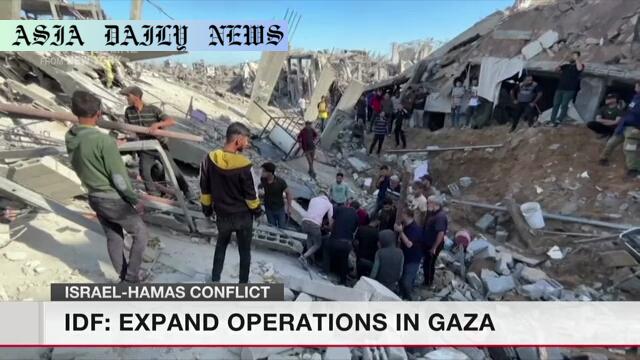Gaza Conflict – Casualties rise as Israeli military escalates ground and air operations, with emergency shelters under attack.
Gaza Conflict sees 93 deaths in one day amid Israeli escalation.
IDF targets shelters, homes, and emergency housing in Gaza.
Local residents express fear and hopelessness as violence grows.
U.S. President Trump leaves the Middle East with no ceasefire deal in place.
Israeli leaders expand operations in absence of peace talks.

Escalation in the Gaza Conflict
The conflict in Gaza has escalated dramatically, with the Israel Defense Forces (IDF) intensifying their ground and air operations. On Friday alone, reports indicated that at least 93 lives were lost in northern Gaza as homes and emergency shelters were reduced to rubble. This operation by the IDF aims to dismantle infrastructure and eliminate individuals classified as terrorists. However, the human toll continues to rise, leaving civilians who have nowhere to turn struggling in despair.
Health authorities in Gaza painted a grim picture of the aftermath. Emergency shelters, initially established to aid displaced families, turned into sites of destruction as repeated airstrikes targeted residential areas. A male resident summed up the growing hopelessness, stating, “Every day martyrs, every day martyrs,” while adding that locals had been repeatedly told to expect a resolution to the conflict that never comes. The sentiment voiced speaks to a broader sense of despair and despondency gripping the area.
The Toll on Civilians and the Search for Safety
Civilians in Gaza are grappling with a nightmarish dilemma: staying put and risking airstrikes or attempting to flee only to find no place safe. In the words of a female resident, “There is no safe place in Gaza. But we are still heading to the shelter areas that they tell us are safe.” Despite assurances from authorities about the safety of certain zones, these areas are similarly under constant threat. As the strikes intensify, entire families find themselves trapped under rubble or forced into increasingly precarious living conditions. The lack of secure housing and mounting casualties have exacerbated the crisis, making survival not only a physical challenge but also an emotional and psychological burden.
The End of Diplomatic Engagement and Future Implications
U.S. President Donald Trump’s departure from the Middle East without securing a ceasefire agreement further highlights the fragility of the situation. Diplomatic inaction and the absence of meaningful peace discussions have provided a green light for increased military measures by Israel. According to local media, the Israeli government had already made plans to expand operations against Hamas in the event that negotiations failed. This raises serious questions about the path forward and the likelihood of an end to the current violence.
The potential for long-term repercussions is enormous. Apart from the immediate human cost, the destruction of vital infrastructure and the endured psychological scars will leave lasting imprints on the region. The wider international community must consider its role and responsibility in diffusing such conflicts, putting a renewed emphasis on dialogue and humanitarian support.
Commentary
Analyzing the Humanitarian Impact
The evolving crisis in Gaza is a stark reminder of the devastating consequences of prolonged conflict. Civilians inevitably bear the brunt of the violence, as was evident on Friday, when 93 individuals lost their lives. Reports of air and ground strikes targeting homes, emergency shelters, and areas of refuge highlight the severity of their plight. The fact that people are being forced into shelters deemed unsafe speaks volumes about their level of desperation. There is an urgent need for an international response to ensure that civilians, particularly women and children, do not continue to suffer in such catastrophic proportions.
The Role of International Diplomacy
President Trump’s visit and subsequent departure without a breakthrough underline the challenging nature of Middle Eastern geopolitics. The absence of substantial diplomatic agreements is disappointing and provides a troubling catalyst for continued violence. The international community, including organizations such as the United Nations, has to take a firmer stand in mediating peace. While Israel targets militant infrastructure, the sheer human cost underscores the necessity of more balanced approaches that aim to safeguard non-combatants and prioritize humanitarian aid corridors.
The Path Forward
Looking ahead, it is paramount that both sides actively seek avenues to return to the negotiation table. The expansion of military operations can only deepen the mistrust and escalate the cycle of violence. More than ever, there is a need to consider comprehensive solutions that address underlying grievances on both sides. Such resolutions require compromise and a concerted effort from global powers to mediate and enforce peace agreements. Only through sustained efforts at dialogue and reconciliation can the region hope to move toward stability and peace.


